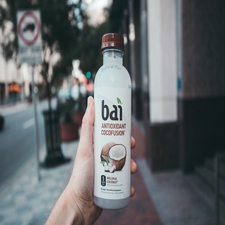From Youtube ads to TV commercials, you’re constantly being bombarded by people trying to sell you stuff.
Advertisers may not be scholars, but they’ve mastered the art of using psychology against us. They know your buying habits better than you do.
By exploiting your vulnerability to different styles of propaganda, companies can trick you into buying more stuff and paying more for it.
Ever wonder why companies offer free trials?
Daniel Kahneman a Nobel-winning psychologist and behavioral economist explain this. Kahneman and his team found that people are more likely to act when they have something to lose, as opposed to gaining the same thing.
That’s why companies offer free trials, so customers will want to keep subscribing after the trial period is over. Sometimes, a company will include an additional price option to make you think you’re getting a deal.
In the book, Hidden Persuasion, ( need link) authors Marc Andrews and social psychologist Matthijs van Leeuwen and Rick Baaren, reveals sneaky techniques used by advertisers to influence your buying behavior.
It is an eye-opener into how we are tricked unconsciously into spending by advertising and social campaigns.
We as consumers want all sorts of things. Some are intangible: Safety, health, the desire to fit in with our peers. Others are just stuff: That favorite car, some sparkling jewelry, a big house.
It’s the job of advertisers to make sure we buy this stuff, and the best way to do that is? Exploit our inherent vulnerabilities.
As a result, advertisers have plenty of ways to manipulate our behavior. So below let’s discuss some of the most effective techniques.
Anthropomorphism – human-like
Disney’s Mickey Mouse is just one example of using anthropomorphism to sell a product. In real life, a mouse is not lovable. How can a mouse encourage people to spend so much money to feel happy and cheerful? Therefore, Disney has found the formula to make Mickey the most popular anthropomorphism of all time.
The thinking here is simple: The more human a product is, the more connected we feel to it. We develop the tendency to anthropomorphize early on when we get attached to things like blankets, binkies and cartoon characters.
An advertisement that contains an animal helps you retain information about a company and its’ product. Anthropomorphism is widely used because it can affect all ages, but most notably children.
It is believed that we tend to add thoughts and emotions to objects in a similar way to how we would experience things ourselves. This, in turn, makes us empathize with things like a mouse or gecko.
However, advertising is often not merely satisfied with us liking the product. Advertising wants to convince us that the product is effective in solving our problems.
A few other anthropomorphisms that come to my mind are; Smokey the Bear, polar bears drinking a coke, Mr. Clean, Mr. Peanut. Anthropomorphism allows advertisers to make their products more likable and trustworthy.
Advertisers know that you will empty your pocket if the appropriate anthropomorphism is dangled in front of you.
Therefore you will feel good about giving away your money for the product.
Trustworthiness
Can you recall the trustworthy person in your favorite ad? A common strategy in advertising is to have spokesperson present information. A trustworthy spokesperson is one whom people perceive, to be honest, and sincere.
Every face you see in an ad is carefully selected based on lots of criteria. How trustworthy that person looks is a key criterion.
There are many people who will buy an item just because a celebrity told them to. It’s due to the fact that they have such a love for that celebrity. The real truth is that celebrities may not use the product themselves.
Young people are especially vulnerable to this trick because they grow up believing that they have to be like them. Cosmetic companies have mastered this strategy. By bringing in a celebrity they add immediate trustworthiness to the product and brand.
Like me, you have seen this example a hundred times on TV. A popular soda maker may have a child star skating down the road while drinking their product.
In theory, young people will see that and they will be able to identify with it because that’s what they are doing anyway. All they need is the product to complete the picture, which they will presumably go out and buy.
George Foreman used his trustworthy face to made millions selling his George Foreman grill. I believe I may have purchased one. Did you purchase one?
Scarcity 
If you’ve ever bought airline tickets on Kayak, you’ve undoubtedly seen the little alert telling you “Only 1 ticket left at this price!” Nothing kicks you into buying mode like the fear of paying more for the same product or missing out on it altogether.
Scarcity seeks to make you feel like you need to hurry, either because quantities are limited, so many people are rushing to get it, or there is a restricted time frame in which you can get your hands on the new product or service.
Scarcity also suggests that other people like the product. Another reason that scarcity technique works so well is that it reminds us that our freedom of choice will soon be gone.
Southwest Airlines uses scarcity well. They offer a limited time airfare sale. Many people will grab tickets just because and take unplanned trips.
McDonald's, who promotes “limited time only” menu items like the McRib is a scarcity appeal. We all remember Kmart’s scarcity appeal, “The Blue Light Special”. I remember people running down the aisles to get the sale items.
Lastly the king of all scarcity appeal, Black Friday Sales. Shoppers would camp out in front of the store entrenches or they would trample each other to get limited quantity items. Unfortunately, some people were injured while participating in this advertising scheme.
Acknowledging Resistance
The best way to get you to buy something is to make you believe you don’t have to buy it. Advertisers have mastered the art of reverse psychology, and it works to their advantage. The fact is, nobody likes to be told what to do. By playing to the fact that consumers don’t want to be persuaded, advertisers are, in fact, persuading you to like their brand.
Now you know a few of the tricks that advertisers use to get your money. These tricks have been used for decades on consumers and they are very effective.
I want to share with you two of my best thoughts that I keep in my mind every time I see an advertisement; (1) every ad that I see is not for me. (2) As long as I have my money in my pocket I am in control.
Have you ever been tricked by ads? Share your stories with me. I would love to read your thoughts.



